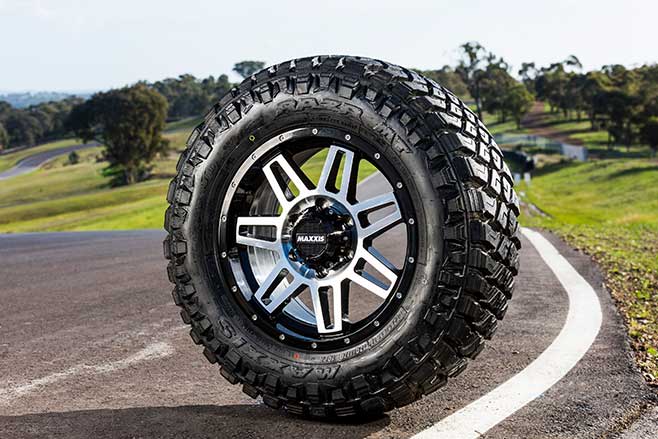Taking on the challenging terrains of your local 4×4 track may sound like a fun and relaxing afternoon out, and it should be. However, choosing the correct tyre size for your 4×4 may not be that simple. The intricacies of 4×4 tyre size are well-known.
Thousands of individuals spend a fortune customizing and fine-tuning their 4×4 off-road vehicles each year in order to improve their ability to handle difficult terrain. When you think about 4×4 customization, you probably think of hinges, mudflaps, towbars, and bottom plates. Of course, there are tyres.
It is critical to select the correct 4×4 tyre for your vehicle as these can help you get the most out of your car! There are three things to understand when buying new tyres for your car; size, load index and speed rating. Making the correct selection is very important to maintain optimal performance, safety and fuel efficiency.
Know Your Tyre Size
Your tyre size can be found moulded into the side wall of your tyre, and occasionally in the owner’s manual, but we always recommend checking the tyres that are installed to the vehicle because they might have been altered. It’s crucial to inspect both the front and back tyres because sizes might differ. The tyre size indicates the tyre’s dimensions.
The Metric sizing system, which is measured in millimeters, is used for the majority of tyre sizes.
On the side of each tyre will be a few numbers such as 265/70 R16.
At first, these codes may appear intimidating. Let us help you make sense of those figures.
The width of the tyre is indicated by the number 265, which is measured from one end of the sidewall to the other. The higher the number, the broader the tyre.
As an aspect ratio, 70 represents the tyre’s height. The rim is eliminated from the final equation and the tyre wall is measured. Larger numbers indicate larger tyres.
R16 means the size (or radius) of the rim that will hold the tyre. As with the previous two figures, the number indicates the size, so higher means bigger.
It’s critical to match your rim size to your tyre size. To maintain tyre pressure, it must fit precisely. In the past, an inner tube was inserted between the rim and the outer rubber of the tyre. The treaded rubber would be kept upright by inflating the tube.
Nowadays, tyre technology does not necessitate the use of an inner tube. This is largely because it saves money for the buyer. The fact that tyres don’t need tubes anymore increases safety because the tubes lack the stability of modern tyres. It also improves efficiency since contemporary tyres have more stability.
So, without the inner tube, the treated tyre is made to match the rim exactly. The tyre is sealed against the rim thanks to a lip edge design.
Load index
The maximum load index of a tyre is defined by the manufacturer. Loads that exceed the rating might cause dangerous circumstances, such as steering instability and even a puncture.
The maximum weight that each tyre can bear is indicated by the tyre load index.
If you’re looking for it, it can be found on the sidewall marking after the diameter reading and before the speed rating.
The weight capacity in kilos of each load index is shown in the table below.
Speed rating
The maximum speed at which a tyre is designed to be used is indicated by its speed rating. These speeds vary from 160 to 300 kilometres per hour.
The speed rating of a tyre is shown on the sidewall of the tyre, generally next to the load index, by a letter at the end of the tyre size.
A tyre with an “S” speed classification, for example, may attain speeds of up to 180 km/h.
Your insurance may be invalidated if your car is equipped with a 4×4 tyre with a lower speed rating than is acceptable for your vehicle. It is thus critical that you check your vehicle’s speed rating before acquiring new tyres.
The maximum speed of each speed classification letter is shown in km/h in the table below.
Making the right choice
Follow the vehicle’s documentation and tyre manufacturer’s guidelines when choosing a tyre size. If the total wheel and tyre diameters aren’t properly matched, riding height and speedometer readings may be drastically different.
Fitting 17-inch wheels to a car that was designed with 14-inch wheels, for example, will change the ride height. As a result, the car’s body will be raised above the ground. The top speed will also increase slightly, and the speedometer will no longer be accurate. And, your vehicle will accelerate more slowly.
When it comes to tyre replacements, once you’ve decided on a size for your car, you’ll want to stick with it.
We’ve come up with 3 questions you can ask yourself to make sure you don’t end up with the wrong tyre size:
- Is the tyre compatible with your present rim? Will your old rim fit the new one if you replace it? Ensure you match the sizing precisely. You can pay a visit to our branch and have experts do it for you.
- Will it fit around your vehicle’s wheel arch without touching the edges? If this is the case, use a smaller tyre to reduce tyre wear and damage.
- Finally, make sure the tyres aren’t too heavy for the engine to move. To find the proper 4×4 tyre size, contact us. We are at your service!
Your vehicle’s wheels and tires are critical components. Though it may seem impossible to miss, many drivers don’t pay much attention to the tyres they purchase for their vehicles, which can lead to a variety of issues. To guarantee that your wheels are safe and provide your vehicle with the finest amounts of traction possible, either give us a call or pop in to our dealership and we can help fulfill your tyre dreams.
